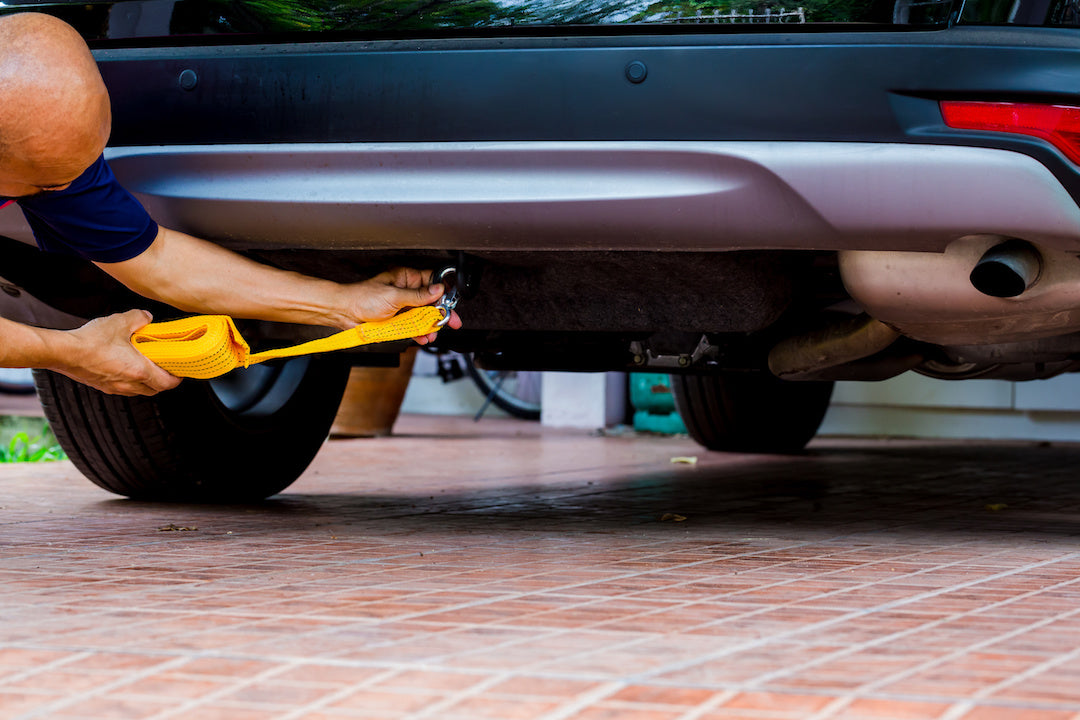Have you ever found yourself in a sticky situation where your car needs a tow, but you’re unsure where to hook up the tow rope? You’re not alone.
Many drivers face this dilemma, and making the wrong choice can lead to costly damage. Imagine the peace of mind knowing exactly where to attach that rope, ensuring a safe and smooth tow every time. This simple knowledge can save you time, money, and stress in those critical moments.
By the end of this article, you’ll be equipped with the confidence to handle any towing situation with ease. Ready to discover the key spots on your car for a secure hook-up? Let’s dive in.

Credit: www.uscargocontrol.com
Tow Rope Basics
Cars need strong tow ropes. Nylon ropes stretch and are durable. Polyester ropes are tough but don’t stretch much. Steel cables are very strong, but heavy. Chains are good for heavy towing. Choose the right type for your car.
Safety is important. Always check the hooks. They must be secure. Look for wear and damage. Do not use damaged ropes. Position the rope correctly on the car. Use the designated towing spot. Avoid wrapping the rope around parts. Test before towing. Follow these steps for safe towing.
Identifying Tow Points
Front tow points are usually found near the car’s bumper. Look for metal hooks or loops. Some cars have them hidden under a small cover. Check the manual if you can’t find them. Make sure the tow point is strong. It needs to hold the car’s weight. Avoid using fragile parts like the bumper or grille. These can break easily. Always attach the rope securely. A loose rope is dangerous. Make sure the rope is tight before towing.
Rear tow points are often at the back of the car. Find a sturdy hook or loop. It is usually under the bumper. Some cars have a special cover hiding it. Always check your car manual for exact location. Make sure the tow point is not damaged. A weak tow point can cause accidents. Secure the rope tightly. Ensure it won’t come loose. Towing safely is very important. Always double-check your setup before moving.
Using Tow Hooks
Factory tow hooks are strong and reliable. They are often built into the car’s design. Easy to find at the front or back of the car. These hooks are made to handle heavy loads. They protect the car while towing. Always check your car’s manual. It will show where the factory hooks are located. Use these hooks for safety and stability.
Aftermarket tow hooks can be added later. Many people choose them for extra support. They are made from strong materials. Often stronger than factory hooks. You can buy them in different sizes and shapes. Make sure they fit your car model. Always install them correctly. Follow the instructions closely. This ensures the tow rope stays secure.

Credit: www.wikihow.com
Tow Rope Attachment Techniques
Find the tow hookon your car. It’s often under the front or back. Some cars have a small cover on the bumper. Remove it to see the hook. Attach the rope to the hook carefully. Make sure it’s tight. A loose rope can be dangerous.
Never attach the rope to parts like the bumper. These parts might break. Always use the hook or a strong point. Check the car’s manual if unsure. A wrong spot can hurt your car. Ensure the rope is not twisted. A straight rope pulls better.
Safety Measures
Always check the tow rope before use. Look for any cuts or frays. A damaged rope can break easily. This can be dangerous. Make sure the rope is strong and clean. Dirt can weaken it. A good rope ensures safe towing.
Find the right spot to hook the rope. Many cars have a tow hook. It’s usually at the front or back. Make sure the rope is tight and secure. This helps to avoid accidents. Double-check the hookup before moving. Safety is important.
Common Mistakes
Many people choose the wrong tow pointson their car. This can cause damage. Always look for designated spotson the vehicle. These spots are usually marked. They are strong and can handle the pull. Using random parts can bend or break them. Check the car manual to find the right spot.
Keeping the rope too tight or loose is a mistake. A tight ropecan snap. A loose rope may not pull the car. It’s important to maintain the right tension. Make sure the rope is sturdy and secure. Regularly check the rope while towing.
:max_bytes(150000):strip_icc()/strap-pulling-56a0556a3df78cafdaa11082.jpg)
Credit: www.liveabout.com
Conclusion
Finding the right spot for a tow rope is crucial. It ensures safe towing without damaging your car. Always check your car manual first. Look for sturdy areas like tow hooks or frame parts. Avoid fragile areas like bumpers or exhausts.
Proper attachment prevents accidents and further issues. Keep safety in mind while towing. This knowledge saves time and prevents stress. Knowing where to hook a tow rope helps in emergencies. Practice makes towing easier and safer. Remember, a little preparation goes a long way.
Stay informed and prepared for any situation on the road.
